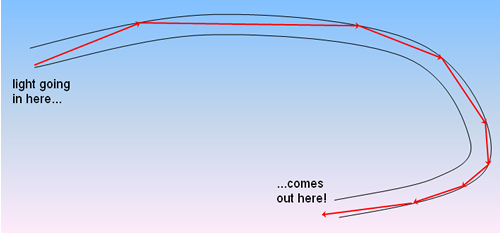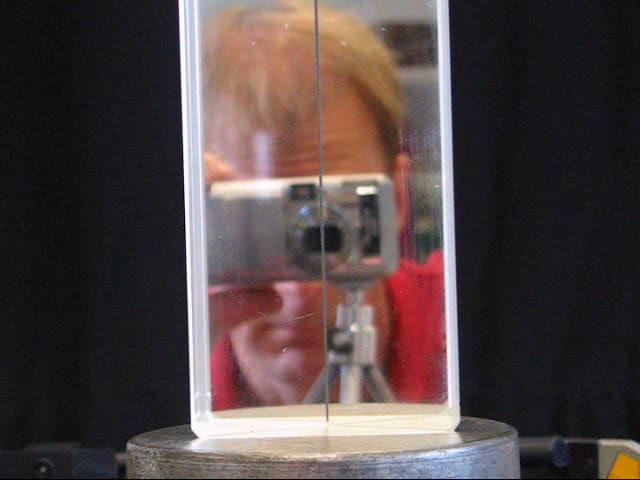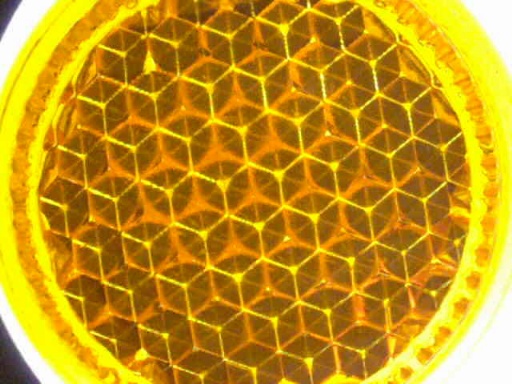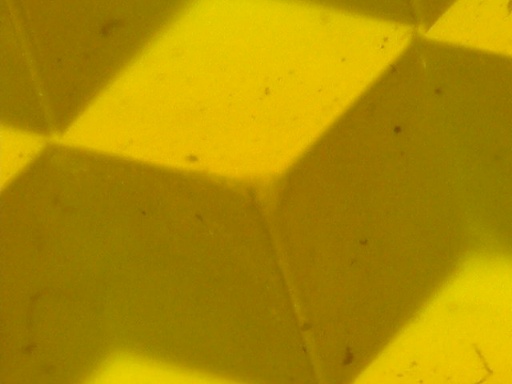Total Internal Reflection
Imagine a ray of light that is inside water. When the light ray hits the surface of the water (assuming air is above) the ray that goes into the air will refract, bending away from the normal. Some of the light will also reflect off the underside of the surface. As the angle of incidence becomes greater, a larger percentage of the light is reflected rather than refracted. When the incident angle is large enough (called the critical angle), all of the light is reflected. This is called total internal reflection, or TIR for short.
TIR is only possible if the light is inside a material with greater n (index of refraction) than the surrounding material.
Activities & Practice
to do as you read
1. Try this applet that illustrates TIR. http://www.phy.ntnu.edu.tw/ntnujava/index.php?topic=49. Move the flashlight and observe what happens. The critical angle is the incident angle such that the refracted ray (which bends away from the normal) would be parallel to the surface of the water. It's at that incident angle (and larger) that none of the light refracts — it all reflects instead.
Examples of TIR
- Have you ever been swimming in a pool, wearing goggles? If you are under the water, and look up at the surface, you will see the sky straight above you. But looking off to the side a bit (still up, just not straight up) you will see the bottom of the pool.
- Optical fibers are thin strands of transparent glass or plastic. These fibers are usually less than a millimeter thick. Light rays entering one end will ricochet down the fiber will very little loss of energy. Optical fibers can carry information farther and faster than electrical cables, and are the backbones of modern information networks like phone systems, cable TV and the Internet.
- The critical angle for glass is about 43° (the exact angle depends on the kind of glass.) Glass prisms that are 45-45-90 can therefore act as a mirror, bending light 180°.
- As discussed previously in the Reflection notes, retroreflectors are used to send light rays exactly back in the direction from which they came. The three perpendicular faces of the corner-cube reflector don't have to have a reflective aluminum coating — simply molding the corner-cube reflector in solid glass or transparent plastic will work.
Sketch of how optical fibers work.

An actual optical fiber cable containing many separate fibers.

Optical fiber network map

Right isosceles glass prism exhibits TIR at its two perpendicular faces, sending incoming rays directly back, perpendicular to themselves. (Click image to see video.)

Additional Activities & Practice
2. Fill a large glass or other transparent container with water. Put it on a windowsill and let the water settle until the water surface is flat and still. Now, position your head below the sill, looking upwards at the underside of the surface of the water. Looking as nearly straight up as you can, you should be able to see the ceiling or sky through the water surface. If you look upwards at a more diagonal angle, however, you will see a reflection of the windowsill, or the ground outside the window.


